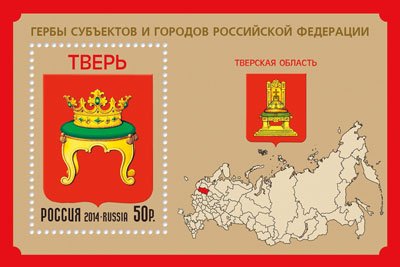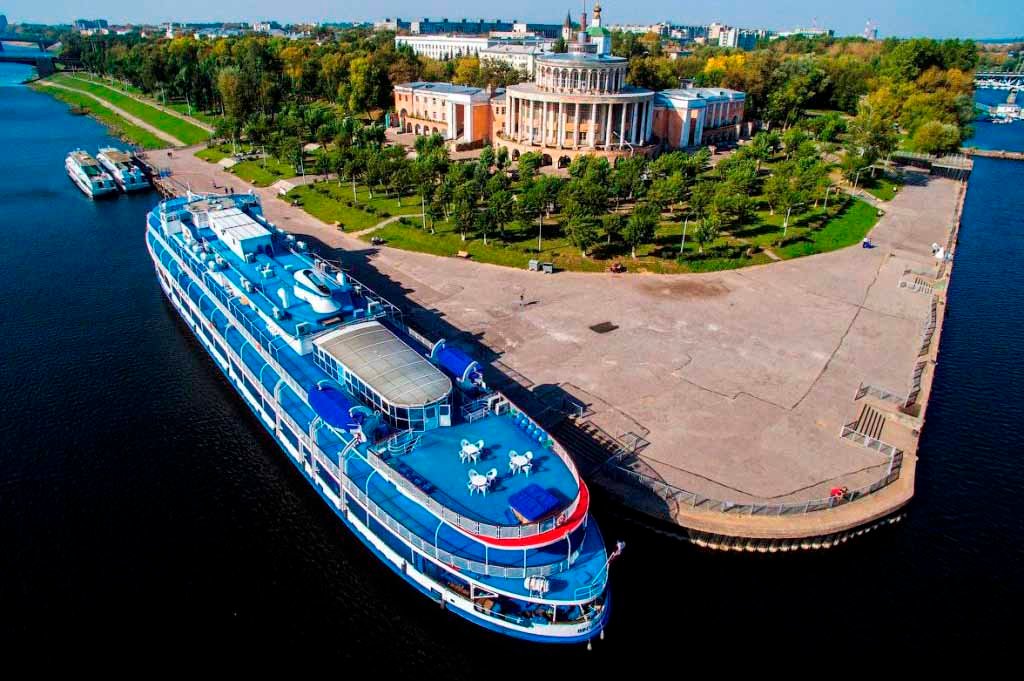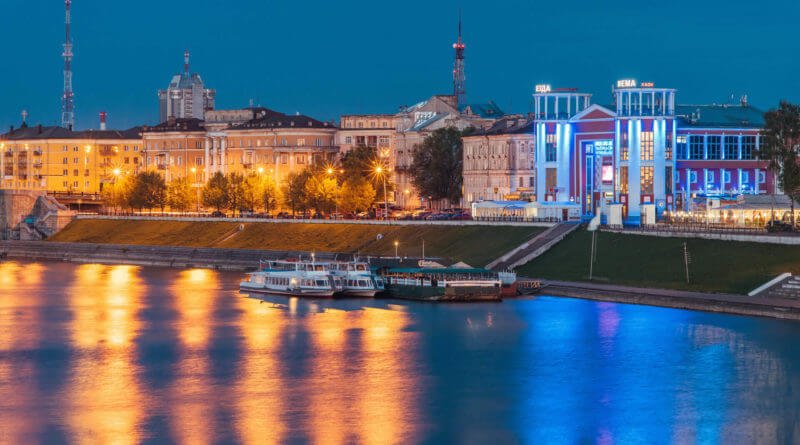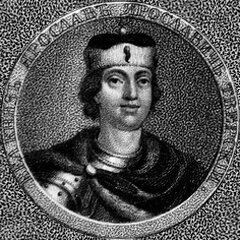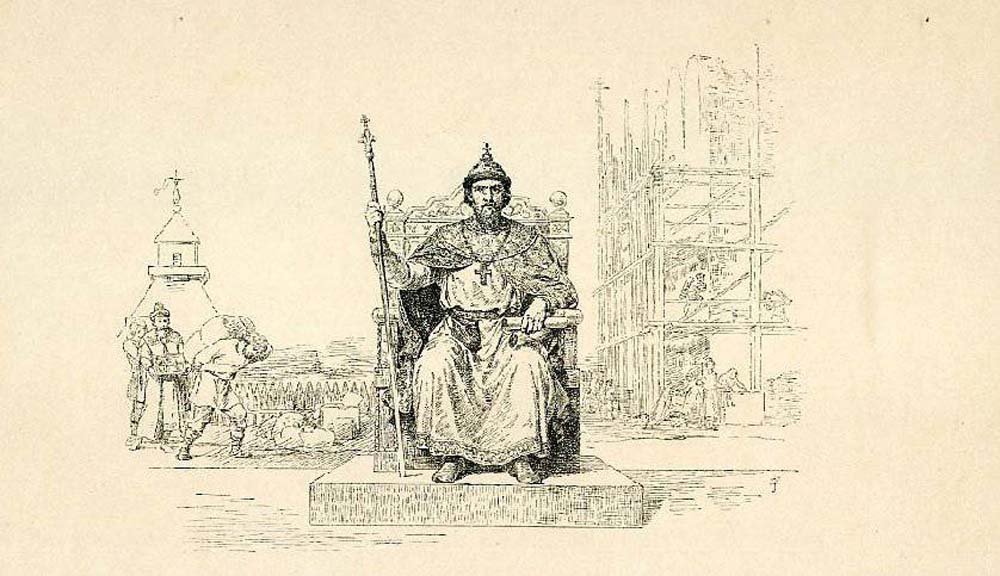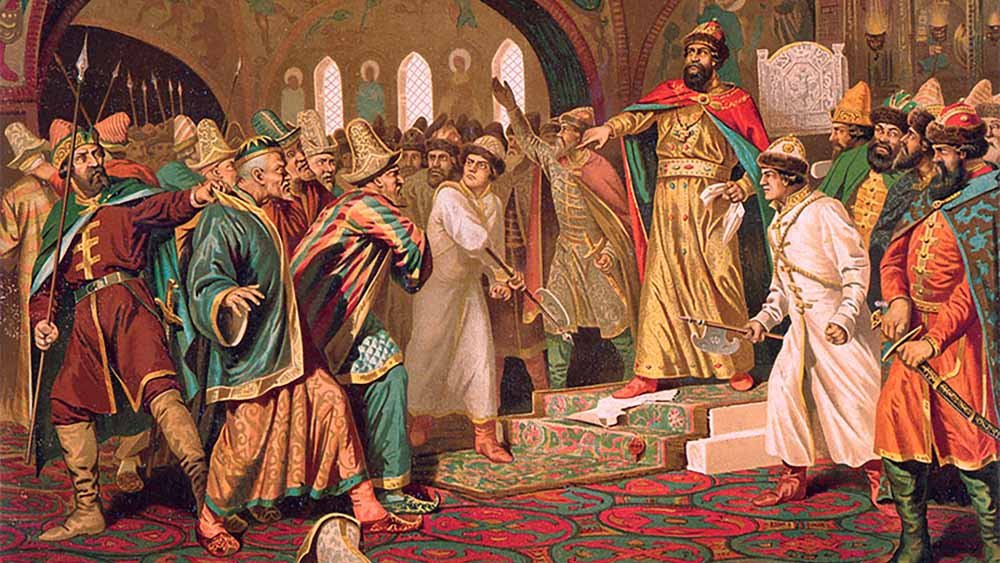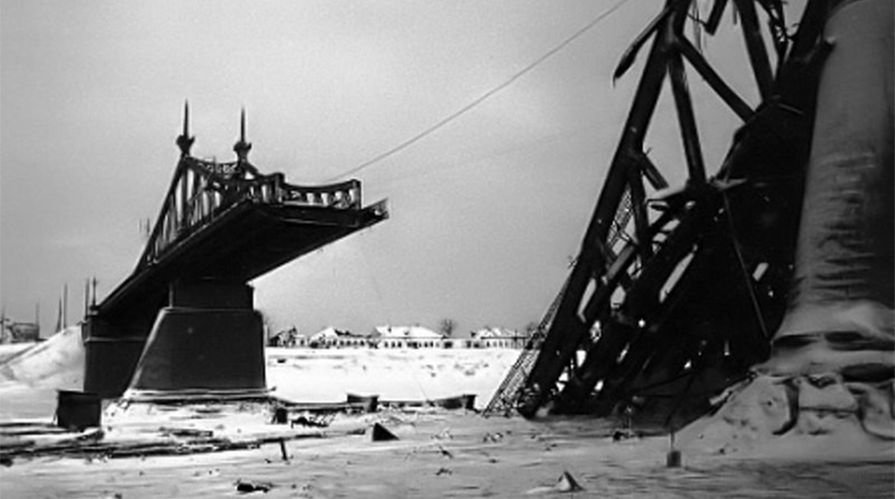Tver (Russian: Тверь, IPA: [tvʲerʲ]) is a city and the administrative centre of Tver Region, Russia. Population: 414,606 (2015 est. It is located 180 kilometres (110 mi) northwest of Moscow.

Culture, Мuseums and Тheaters of of Tver
City of Tver is a large cultural center with 3 professional theaters, an academic philharmonic society, and many museums. Theatrical art of Tver is represented by performances of the Tver Regional Academic Drama Theater, the Theater of the Young Spectator and the Tver State Puppet Theater.
It is also worth noting the Tver Chamber Orchestra “Russian Camerata”, which occupies a worthy place in the list of the best musical groups in Russia.

Numerous expositions of the Tver United Historical, Architectural and Literary Museum, which is one of the largest and oldest museums in Russia, tell about the history and cultural life of Tver and the Tver region. Noteworthy is the Tver Museum of Life “City Estate”, located in the only fully preserved city estate complex, previously owned by the Arefiev merchants. The Tver Regional Picture Gallery has the richest collections of Russian and Western European painting, graphics, sculpture and decorative and applied art. Also in the city there are: Museum “Tver Manufactory”, Museum of M. Saltykov-Shchedrin, Museum of Military Traditions, Museum of Communications of the Tver Region, etc.
Attractions
The city of Tver is one of the ancient Russian cities of the Upper Volga region, which is part of the Golden Ring of Russia. The sights of Tver and the Tver region are associated with the history of the region, as well as with famous, outstanding people who were born or lived at different times on the Tver land. In the historic center of Tver, on the territory of the City Garden, you can see the remains of an earthen rampart, a log wall and the rampart of the local Kremlin. The main street of Tver, Sovetskaya, runs from Revolution Square through the city center; almost everything here is a monument of architecture.

Of greatest interest is the architectural ensemble of administrative buildings (late 18th century) on Lenin Square. Trekhsvyatskaya Street leads to Lenin Square – the main tourist thoroughfare of Tver, an analogue of the Moscow Arbat.
The nearby Stepan Razin embankment is one of the most attractive sights of the city. From here, a delightful view of the Volga and the left-bank districts of the city opens, where you can see many architectural masterpieces. On the cape at the confluence of the Tvertsa River with the Volga stands the Assumption Cathedral (1722) of the ancient Otroch-monastery, next to it there is a picturesque building of a River Station.
On the opposite bank of the Tvertsa there is a slender silhouette of the Catherine Church (1774), on the left bank of the Volga there is a wooden mansion of the merchant Arefiev (1784).
The symbol of Tver is the old bridge across the Volga, which is more than a hundred years old. Surprisingly light, seeming almost tracery, the metal structure of the bridge admires to this day.
Monument to Afanasy Nikitin, which is an adornment of the embankment named after him, reminds of the great Tver traveler and merchant. Among other monuments of the city are the monument to V. Lenin, M. Kalinin,
A. Pushkin, M. Saltykov-Shchedrin, I. Krylov, G. Zhukov, the Victory Obelisk, the Bowed Cross to Mikhail Tverskoy, installed in the City Garden. In the historical center of Tver the Imperial Travel Palace, which is an architectural monument of the 18th century, still serves as an adornment of the city to this day.
Today, the Travel Palace houses the main museum treasury of the city – the Tver Regional Art Gallery and the Tver State United Historical, Architectural and Literary Museum. The oldest surviving temple building in Tver is the White Trinity Church (1564), the interior of which is interesting for the large unique iconostasis of the 18th century.
No less interesting is the Nativity of Christ Monastery, from which the Nativity of Christ Cathedral (1820), the Resurrection Cathedral (1913), the Trinity Church (1830), the Savior Church (1800), buildings of residential and utility rooms have survived to this day. Another important architectural landmark of the mid-18th century. is the Ascension Cathedral.

Among the sights of Tver, one should also note: the Kazan Church (1779), the Nikitskaya Church (1763), the Church of Mikhail Tverskoy (2002), the Chapel of John of Kronstadt (1913), the building of the former magistrate (1770), the building of the former Noble Assembly (1841), etc.
There are many attractions in the Tver region, first of all, the State Literary and Memorial Museum of A. Pushkin in Bernovo – a unique monument of Russian culture of national importance, as well as the S. Lemeshev Museum in Knyazevo, the V. Serov Memorial Art Museum in Domotkanovo,
History
Tver was formerly the capital of a powerful medieval state and a model provincial town in the Russian Empire, with a population of 60,000 on 14 January 1913. It is situated at the confluence of the Volga and Tvertsa Rivers. The city was known as Kalinin (Кали́нин) from 1931 to 1990. The city is where three rivers meet, splitting the town into northern and southern parts by the Volga River, and divided again into quarters by the Tvertsa River, which splits the left (northern) bank into east and west halves, and the Tmaka River which does the same along the southern bank.
Tver’s foundation year is officially accepted to be 1135. The name of the city is of Finnish origin, Tiheverä. Originally a minor settlement of Novgorodian traders, it passed to the Grand Prince of Vladimir in 1209. In 1246, Alexander Nevsky granted it to his younger brother Yaroslav Yaroslavich (d. 1271), from whom a dynasty of local princes descended. Four of them were killed by the Golden Horde and were proclaimed saints by the Russian Orthodox church.
Yaroslav III Yaroslavich was the first Prince of Tver and the tenth Grand Prince of Vladimir from 1264 to 1271. Yaroslav and his son Mikhail Yaroslavich presided over Tver’s transformation from a sleepy village into one of the greatest centres of power in medieval Russia.
Formerly a land of woods and bogs, the Principality of Tver was quickly transformed into one of the richest and most populous Russian states. As the area was hardly accessible for Tatar raids, there was a great influx of population from the recently devastated south. By the end of the century, it vied with Moscow for supremacy in Russia. Both Tver and Moscow were recently founded cities, so the outcome of their rivalry was far from certain.
Mikhail, the Grand Prince of Tver, who ascended the throne of Vladimir in 1305, was one of the most revered medieval Russian rulers. His policy of open conflict with the Golden Horde led to his assassination there in 1318. His son Dmitry “the Terrible Eyes” succeeded him and, concluding an alliance with the mighty Grand Duchy of Lithuania, managed to raise Tver’s prestige even higher.
Exasperated by Dmitry’s influence, Prince Ivan Kalita of the Grand Duchy of Moscow engineered his murder by the Mongols in 1326. On hearing the news of this crime, the city revolted against the Mongol Horde. The Horde joined its forces with Muscovites and brutally repressed the rebellion. Many citizens were killed, enslaved or deported. This was the fatal blow to Tver’s aspirations for supremacy in Russia.
In the second half of the 14th century, Tver was further weakened by dynastic struggles between its princes. Two senior branches of the ruling house, those of Kashin and Kholmsky, asserted their claims to the grand ducal throne. The claimers were backed up by Moscow and eventually settled at the Moscow Kremlin court.
During the Great Feudal War in the Grand Duchy of Moscow, Tver again rose to prominence and concluded defensive alliances with Lithuania, Novgorod, Byzantium, and the Golden Horde. Grand Prince Boris of Tver sent one of his men, Afanasy Nikitin, to search for gold and diamonds as far as India. Nikitin’s travelogue, describing his journey from 1466 to 1472, is probably the first ever firsthand account of India by a European. A monument to Nikitin was opened on the Volga embankment in 1955.
On 12 September 1485, the forces of Ivan the Great seized the city. The principality was given as an appanage to Ivan’s grandson, only to be abolished several decades later. Last scions of the ruling dynasty were executed by Ivan the Terrible during the Oprichnina. At that turbulent time, Tver was ruled by Simeon Bekbulatovich, a former khan of Kasimov. The only remnant of his ephemeral reign is a graceful tent-like church in the village of Kushalino, 28 kilometres (17 mi) northeast of Tver.
The city’s decline was not irrevocable, however. With the foundation of St. Petersburg, Tver gained importance as a principal station on the highway (and later railway) en route from Moscow. It was much visited by Russian royalty and nobility traveling from the old capital to the new one and back.
In the course of the administrative reform carried out in 1708 by Peter the Great, Tver was included into Ingermanlandia Governorate (since 1710 known as Saint Petersburg Governorate). In 1727 it was transferred to the newly established Novgorod Governorate.
In 1775, Tver Viceroyalty was formed from the lands which previously belonged to Moscow and Novgorod Governorates, and the whole area was transferred to Tver Viceroyalty, which in 1796 was transformed to Tver Governorate. Tver was the center of Tverskoy Uyezd.
Following a devastating fire of 1763, the city was rebuilt in a Neoclassical style. Under Catherine the Great, the central part was thoroughly reconstructed. Crumbling medieval buildings were razed and replaced with imposing Neoclassical buildings. The most important of these are the Travel Palace of the Empress (designed by the celebrated Matvei Kazakov), and the Ascension church (designed by Prince Lvov and consecrated in 1813).
In 1809, a committee was established to improve the city. An architect designed the Cathedral of Christ and houses on the waterfront and in the city center (30 buildings), and rebuilt the summer palace.
Catherine Pavlovna (a sister of Alexander I) was married to the governor of Tver, and the palace was a social center and literary salon for Tver and visitors from Moscow and St. Petersburg. Writer and historian Nikolay Karamzin read excerpts from his History of the Russian State to Alexander. Napoleon was near Tver in 1812.
On 12 July 1929, the governorates and uyezds were abolished. Tverskoy District, with the administrative centre in Tver, was established within Tver Okrug of Moscow Oblast. On 23 July 1930, the okrugs were abolished, and the districts were directly subordinated to the oblast.
On 20 November 1931, the city was renamed Kalinin after the nominal head of state (1919–1946) and affiliate of Josef Stalin, Mikhail Kalinin, who had been born nearby. Simultaneously, Tverskoy District was renamed Kalininsky District. On 29 January 1935 Kalinin Oblast was established, and Kalininsky District was transferred to Kalinin Oblast.
The last vestige of the pre-Petrine epoch, the Saviour Cathedral, was blown up in 1936. In 1940, the NKVD executed more than 6,200 Polish policemen and prisoners of war from Ostashkov camp.
The Wehrmacht entered Kalinin on Monday 13 October 1941 according to MI9 photographs, occupied Kalinin for two months from Monday 13 October 1941/Tuesday, 14 October to 19 December 1941, leaving the city in ashes.
Kalinin was the first major city in Europe to be retaken from the Wehrmacht.
During the Cold War, Kalinin was home to the Kryuchkovo air base, which is no longer in service. The city’s historic name of Tver was restored on 17 July 1990.
Apart from the suburban White Trinity Church (1564) (Russian: Храм Троицы Живоначальной, the Temple of the Lifegiving Trinity), there are no ancient monuments left in Tver. The central part is graced with Catharinian and Soviet edifices, bridges, and embankments. Tver’s most notable industries are rolling stock manufacturer Tver Carriage Works, opened in 1898, an excavator factory, and a glass factory. Tver is home to Migalovo, which is one of Russia’s biggest military airlift facilities.
Coat of Аrms of Tver
The coat of arms of Tver is one of the official symbols of the municipal formation of the city district of the city of Tver – Tver region of the Russian Federation . Approved by Decisions of the Tver City Duma No. 66 of May 25, 1999 and No. 32 of February 22, 2000. The coat of arms is entered into the State Heraldic Register of the Russian Federation under registration number 700.
The Tver coat of arms is one of the oldest in Russian heraldry. In the 16th century in the Russian state, territorial emblems were depicted mainly on seals that fastened international acts, and for the first time the image of the emblem of the Tver land was recorded on the state seal of Ivan IV . The crown on the throne is a rare plot associated with early Christian art. It is being interpreted as a symbolic image of Christ the Almighty.
…


